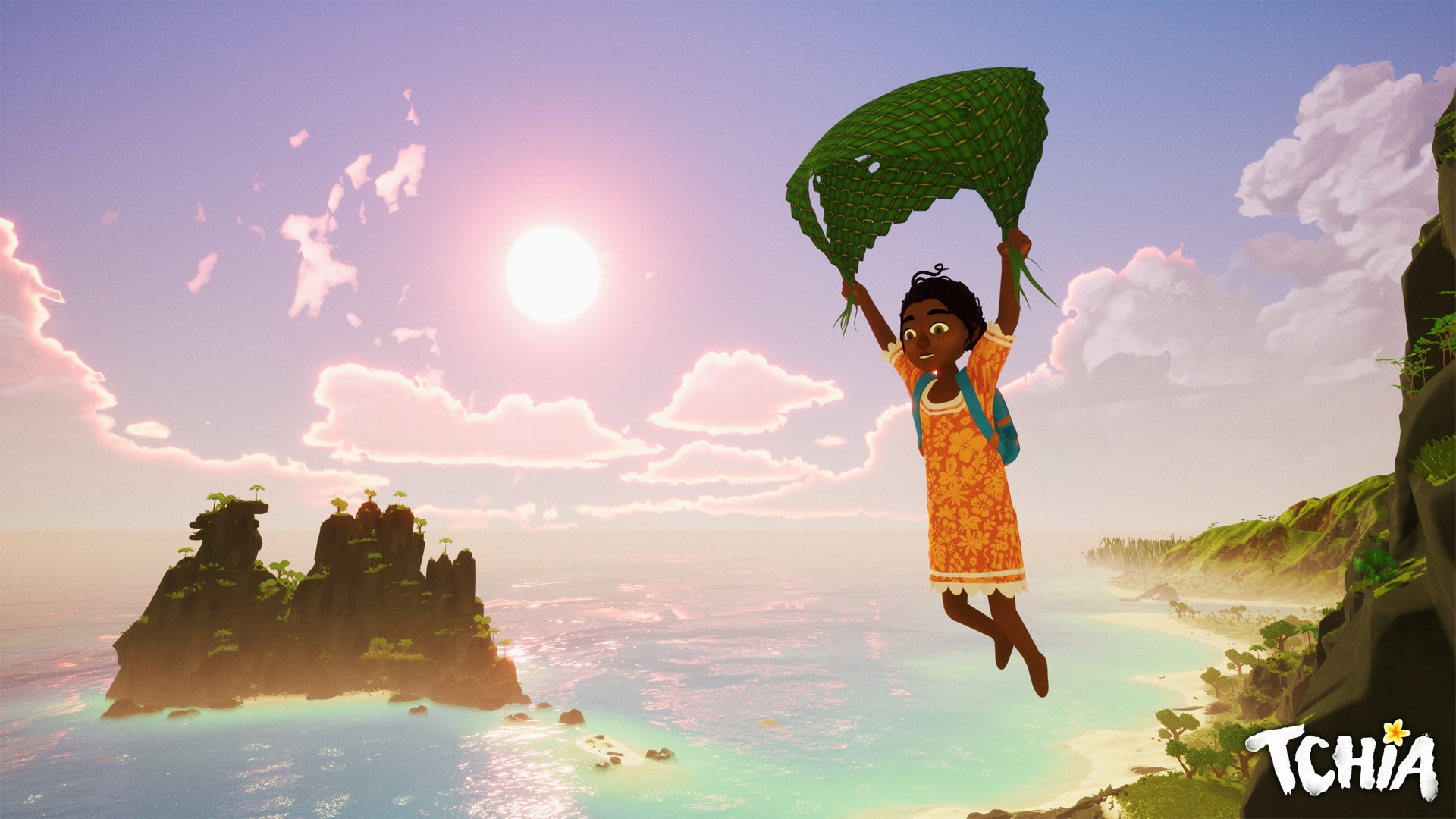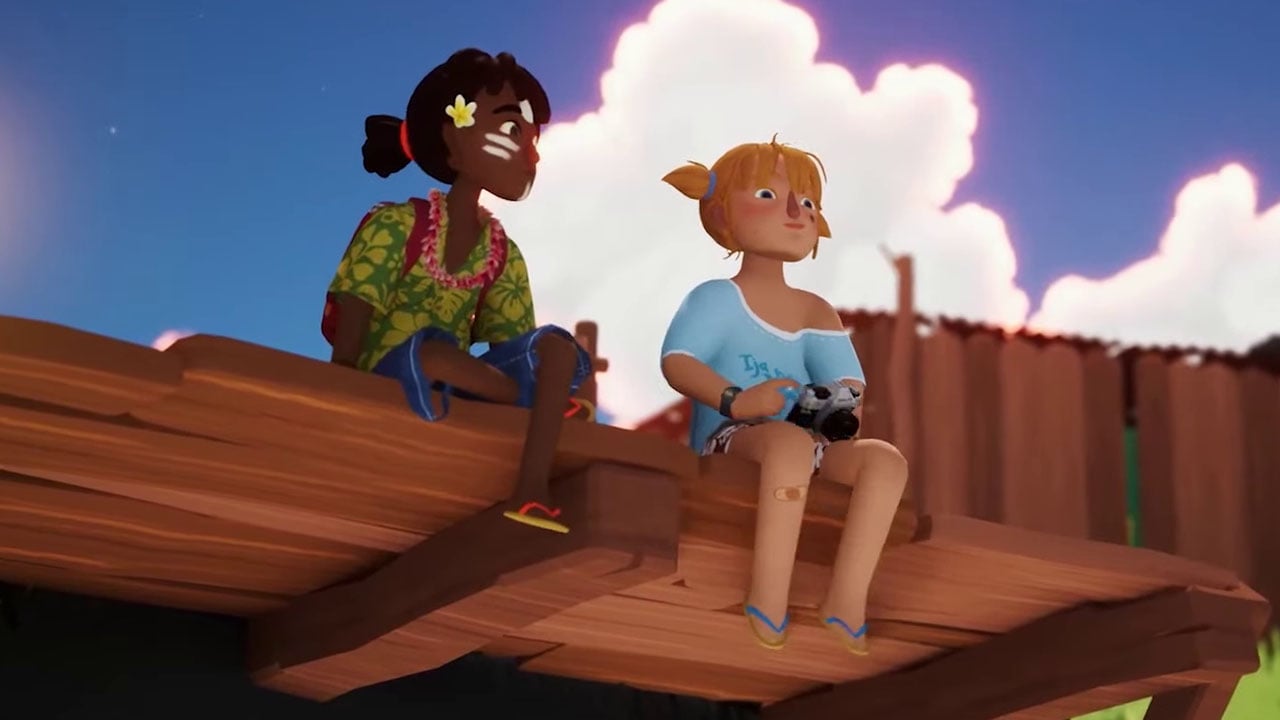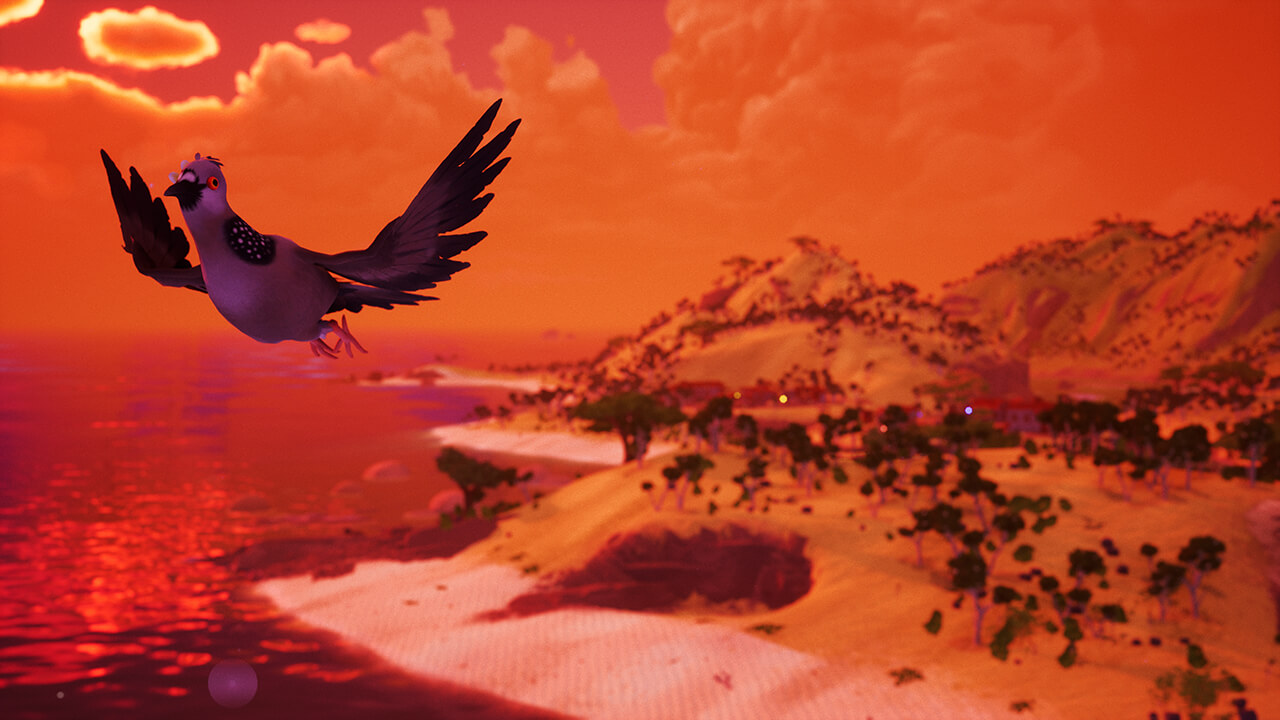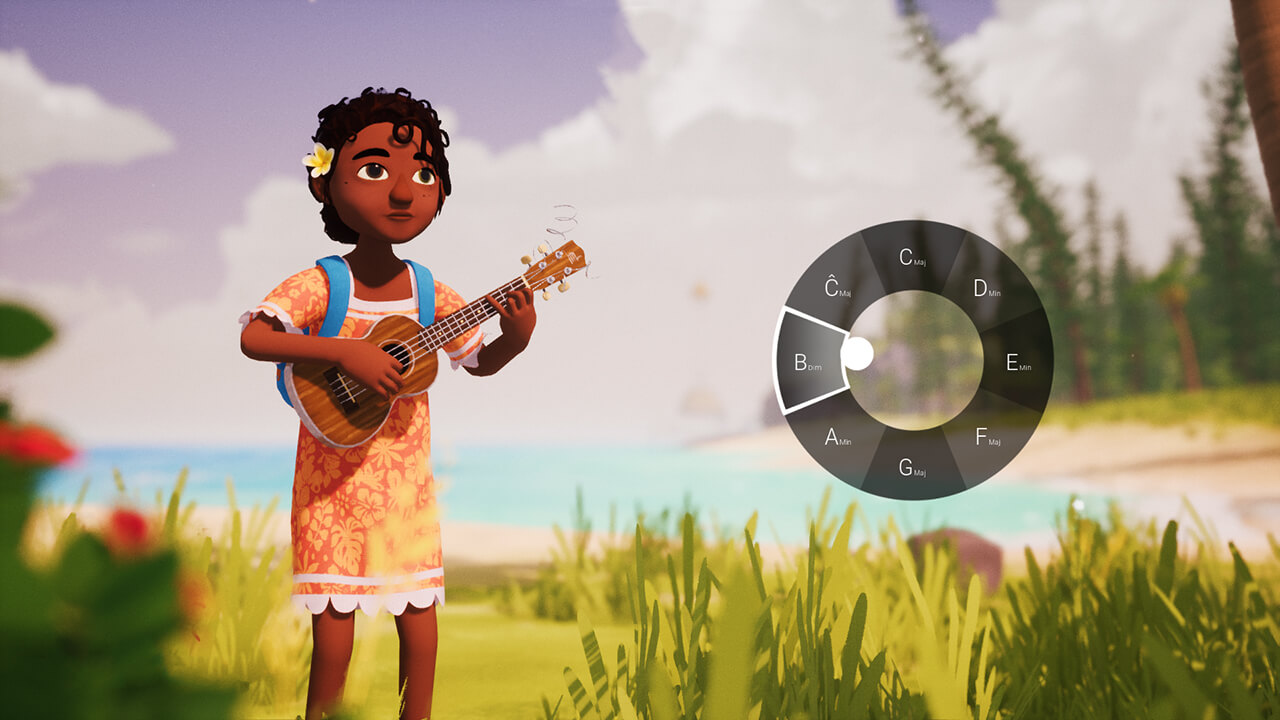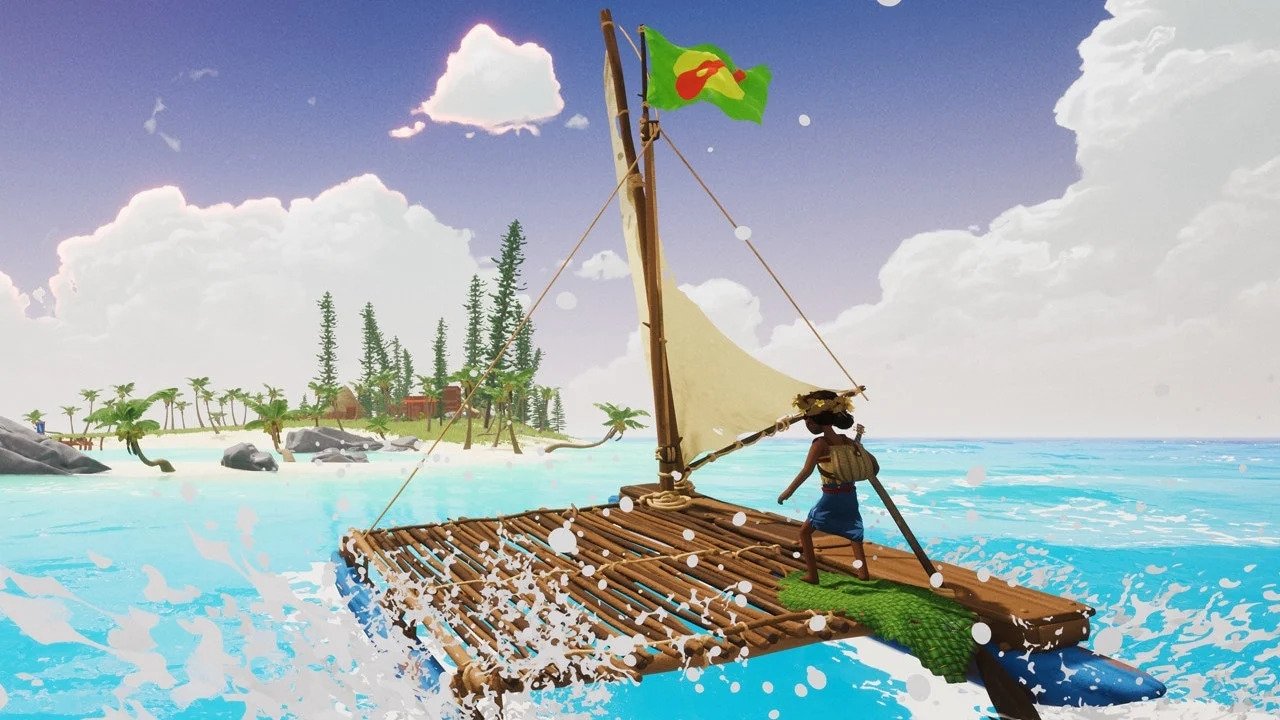Title – Tchia
Platforms – PS5, PS4, PC
Release Date – March 21, 2023
Developer – Awaceb
Publisher – Kepler Interactive
MSRP – $29.99
ESRB – T for Teen
Disclaimer – This product is being reviewed on the PlayStation 5. A review copy was provided by Kepler Interactive for the purpose of this review. This review may also contain spoilers for certain gameplay and story elements. Watch at your own risk, you have been warned. Gaming Instincts is an Amazon Affiliate and does gain financial benefits if you choose to purchase this product on this page.
The humanity of the developers shines through Tchia as they recreate their homeland, New Caledonia, and accurately represent its beautiful culture. Tchia is a love letter that illustrates the warmth of humanity while examining its depravity, giving us a sense of light amidst the dark. An otherwise annoying fetch quest structure is made fun by this tone and exploration, which ditches obtrusive UI and markers.
Story: A Surprising Turn
The story of Tchia caught me by surprise. For such an innocent game on the surface, I didn’t expect it to get so dark. It starts with Tchia and her father living peacefully on the island of Uma. Immediately, we see how endearing the story is with one sequence where you play the ukulele as Tchia’s father sings about his daughter. The game is filled with wholesome moments like this that bring out the goodness in humanity. Soon, though, the peace is interrupted when a clearly antagonistic man and his henchmen kidnap Tchia’s dad. As a result of this incident, Tchia is off to the islands of Ija Noj and Madra Noj to rescue her dad and uncover the mystery behind New Caledonia’s leader, Meavora.
Coming in, I expected the game to be about exploring a peaceful island, but instead, we got a Far Cry-esque storyline about resisting an evil governing authority. At the same time, you are doing innocent things like building rock sculptures and crafting totems. The tone is bizarre, mixing innocence with darkness. I give the game credit for going places I didn’t expect even if it juxtaposes the sweet main character as she smirks and plays the ukulele in sunlit bliss. Maybe that’s what the story is getting at, the complexity of humanity, the tension between good and evil.
With that said, the story is not too deep, never diving into the deeper turmoil of some of the events in the campaign. It moves at a brisk pace, focused on moving the story along, instead of the characters themselves. Sometimes, because of this, it was unclear what the characters knew and why they did certain things. From a bird’s eye point of view, however, the story has twists and an evolving mystery that kept me interested. Ultimately, it succeeds in two generalized areas: respect and representation of New Caledonia’s culture and venturing into unexpectedly dark content.
Gameplay: Extraordinary Exploration
Exploration is Tchia’s main focus and biggest success. It avoids the cluttered icons and UI that plague other open-world games while not being overly confusing or overwhelming. The developers walked the thin line of open-world design to ensure any open-world frustration doesn’t take away New Caledonia’s beauty. To get into specifics, the map works as an actual map that Tchia carries with her. You can’t see where you are on the map. Instead, you have to use landscapes and town names to get an estimate of where you are located. This is balanced by pressing a button that appears to circle a general area of your location.
Additionally, if you find a signpost, you can mark that location exactly on the map. You always know where you are without relying too much on the map, giving you the freedom to simply explore. If you have a mission objective, the compass on the bottom right will point to it. I can’t emphasize enough how balanced the exploration is. You are not wandering from icon to icon like a checklist but you are never completely lost. Furthermore, the map never seems overwhelming in terms of size, but it is brimming with things to do. Lastly, a mini map can be pulled up in the corner for a quick look, and all the UI can easily be removed for uncluttered exploration.
Now, how exactly do you get around and what are you exploring? New Caledonia is a charming place with mountains to scale, dark caverns to trek, swamps to wade through, and towns with unique people to meet. The main way you get around is soul jumping, which allows Tchia to possess objects and animals in the world. You can turn into a deer, a bird, a fish, a log, and even a banana. Each transformation is slightly different in that some are faster and better for transportation and others have unique abilities, like the cat’s night vision. The bird was by far the ideal way for me to get around. The bird can also rain poop from above. I once pooped on a guy’s meal just for giggles.
It doesn’t actually do anything, but the game adds small things like this to make each transformation feel unique. I do wish the features of each possession were used for specific situations or objectives. There was one objective that tasked you with locating a chicken egg. I looked all over the place and scoured every chicken coup I could find. I eventually realized I had to possess a chicken and then lay an egg. As soon as I realized this, the initial difficulty of finding the egg didn’t bother me because the solution was so funny and rewarding. Unfortunately, moments like these are rare, and soul-jumping, apart from combat, is mostly for transportation.
You have a limit to how long you can stay transformed into a specific object or animal. This kept me constantly finding creative ways to travel instead of just relying on one method like, say a car, in a modern open-world game. It also enticed me to explore more than I normally would. You can enter a town, find a food stand and eat some good-looking New Caledonia Cussiane to refill your soul-jumping bar. However, when I did this, I often got sidetracked by a shiny object in the distance or a side activity in the town. It seems all the mechanics work together to create an ideal open-world experience.
If you are not running around as a dog or flying through the sky as a bird, you are likely running, climbing, and gliding across the environment. Tchia has a stamina meter, much like Link in Breathe of the Wild, and she can travel pretty much anywhere as long as she has stamina. Stamina can easily be upgraded by finding yellow fruit in the environment. The choice to have so much freedom in climbing led me to believe I could go anywhere, and for the most part, that was true. You can even climb to the top of a tree, swing back and forth, and have the tree catapult you through the air. The interaction never gets old and was a creative way to have Tchia travel faster when she can’t soul jump. I also used it often to get across rivers, saving time, and having fun doing so.
The world is basking in culture with several unique side activities to do. Out of all of them, I found totem sculpting the most obnoxious. Not because the sculpting itself was difficult or boring, but because of its wider gameplay implementation. There are eight shrines scattered across the game’s two islands and they are unlocked by carving the correct totem face and placing them in front of the shrine door. If you have one mistake in your totem, then the door won’t open and you have to travel all the way back to a sculpting station. Without fast travel, you can see why this would get annoying, especially since shrine rewards are one of the most critical upgrades in the game.
The magical fruit found at the end of each shrine will upgrade your soul-jumping meter, allowing you to stay in animal form for much longer. The concept of sculpting a totem to unlock a door is creative, but it is not very convenient when actually playing the game. The shrines themselves do a good job of differentiating the gameplay loop. During one, I had to shoot a series of floating orbs with a slingshot, and in another, I had to transform into a ball and navigate obstacles. Don’t expect any complex dungeons or puzzles, just fun little diversions.
Other side activities, such as the shooting range, racing, and diving boards, give you trophies that can then be used to unlock cosmetics for Tchia. I was amazed by the number of cosmetic options in the game. She can wear anything from an elegant dress to henchmen’s body armor. Every Tchia will be unique and I appreciate the detail the developers put into this part of the game. Another significant part is Tchia’s Ukulele.
Doing the side activities mentioned above will provide different skins for the instrument. It’s crucial that you design the ukulele to your liking because you will see it a lot. To my surprise, Tchia has a lot of rhythm-based gameplay. Most main missions will include a section where you are playing the ukulele while another character sings or dances. The mechanic is pretty simple as you pick the appropriate chord and time your button press with the indicator. I can see why these scenes might be annoying for some, but I thought they were really endearing.
For one, there is no fail state. It’s simply a time to bask in the music. No one cares if you mess up. Also, if you just want to enjoy the scene, you can opt for auto-play. Every time one of these sections came up, I got emotional because they usually represent a special moment in the story, such as a deepening friendship, or a wholesome moment between daughter and parent. Outside of this, you can choose to play the ukulele on your own by sitting at a campfire. The ukulele simulation is extremely detailed with the ability to bend notes, pick a high note, and even choose when to strum up or down. This is just another example of the developers’ love shining through the game. They didn’t have to go so in-depth with this feature, but the fact that they did tells me that someone on the team loves music, and therefore, music in Tchia feels like a very special part of the game.
The Ukulele also has gameplay functionality. You can play specific chords to change the time of day, attract animals to you, or even gain a bubble that helps you breathe underwater. I love that the ukulele is used for specific gameplay elements, and is not merely a side activity. These features, called Soul Melodies, are unlocked by Rock Balancing, a mini-game where you have to stack rocks without the tower falling. Despite Tchia’s fingers clipping into the rocks, this was a relaxing activity that never overstayed its welcome. The last side activity I want to talk about is the Maano camps because they represent my biggest complaint about the game – combat.
Like the enemy camps scattered throughout other open-world games, Mannu camps serve as combat areas where you must defeat every enemy to complete the activity. The enemies, in this case, are clothe creatures that can entrap Tchia in fabric. In order to fight them, you must possess an oil lamp, gas tank, or fiery log that you can launch at them. I, for one, didn’t think Tchia needed combat in the first place. I think it’s an unnecessary addition to a game that’s supposed to be primarily about exploring. I could excuse it if it was more interesting, but every combat encounter plays out in the same way: find an explosive and launch it at the enemy.
When the camps are more extensive and there are up to 34 Maano to kill, this process gets old fast. Unfortunately, there is one campaign mission that had Tchia infiltrate three huge enemy bases. First of all, when I was out of explosives in my inventory, I often just ran around in circles desperately trying to find an oil lamp to possess. This turned into an infuriating process. It helped some that you could possess a Mwaken, a wooden totem that shoots fireballs, but they must be summoned by playing the Ukulele. Stopping to play an instrument in the middle of a combat encounter is less than ideal.
Furthermore, the mechanics were not meant for such large-scale battles and they buckled under pressure. Since you can climb on anything, I often found Tchia accidentally climbing when I wanted her to avoid an enemy. Since the gameplay wasn’t designed around combat, there was no real way to dodge or lock on. To add insult to injury, the more expansive camps run into the classic problem of hiding the last few enemies. As a result, I spent a significant amount of time just searching for the last enemy when I’d much rather be seeing what else the wide-open world had to offer.
Barring the campaign mission, you can avoid the Maano camp altogether and focus on the exceptional part of Tchia, exploring this stunning island. Combat seems like an add-on to make the game more exciting, but it is ultimately an unnecessary annoyance.
Visuals, Audio, and Tech
Tchia’s visuals are the most striking when you are exploring the wilderness, and fortunately, that’s where you will spend most of your time. I was most impressed by the color hues when the times of the day changed. In the afternoon, everything has an orange tinge and at other times fog obscures the vibrant colors of the day. The visuals are definitely subpar, with no detail or texture, but when looking at the wider landscape it captures the alluring nature of the islands.
The water also looks gorgeous, especially when the sun reflects off its surface, giving it a pink or yellow tone. The music was made by New Caledonian residents and authenticity is on full display. When exploring the wilderness, the peaceful sound of the music enhances the overall feeling of serenity. However, the visuals don’t translate well to the interiors or larger towns. All the buildings and interiors are plain with little detail. The buildings, for example, look like gray boxes that have not been finished in development. Luckily, these environments are few and far between and easy to ignore.
Before closing, I need to summarize some of the bugs I encountered along the way. The biggest one was an infinite black screen after a cutscene as if the visuals had never loaded in. I had to exit the game and then re-enter. In another instance, the enemies were invisible, but I was still notified they were nearby. Upon investigating, I discovered that one was in a wall and was attacking from it. There was nothing I could do except leave and hope he dies of old age. Lastly, there was one race I tried but my character wouldn’t move when the timer counted down. The completionist inside me felt frustrated that the activity remained unfinished. As you can see, I encountered some significant bugs during my playthrough. I was able to finish the game and only had to close it out once. I can’t promise that you will encounter severe bugs, so make sure you are aware before purchasing.
Final Verdict: A Love Letter
I finished the campaign and I can’t wait to jump back into the world and simply explore without objectives or my compass. It’s rare that I return to an open-world game, but Tchia’s exploration is so fun and easy. I loved being on the islands and soaking in the culture of New Caledonia. The game doesn’t have fast travel, except at a few specific locations, but that mostly didn’t bother me because the soul-jumping was so creative and enticing. It appears that the developers succeeded and went beyond their main goal of allowing everyone to enjoy New Caledonia. Unfortunately, the extensive combat sections were infuriating and boring, diminishing the overall charm of the game. Tchia gets an 8.0 out of 10.
Stay tuned at Gaming Instincts via Twitter, YouTube, Instagram, and Facebook for more gaming news.



